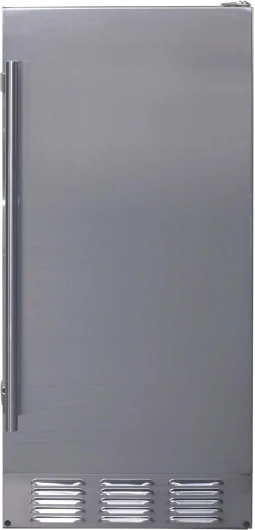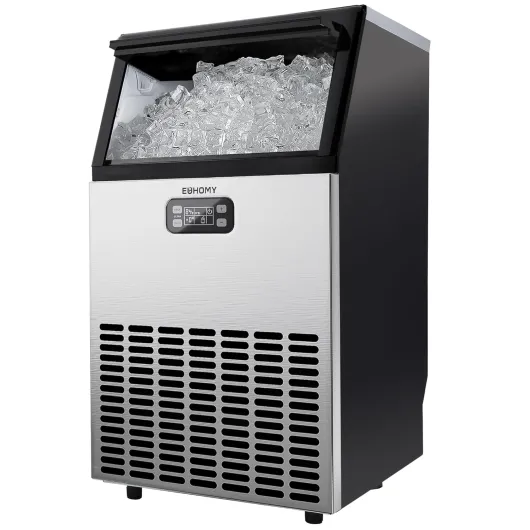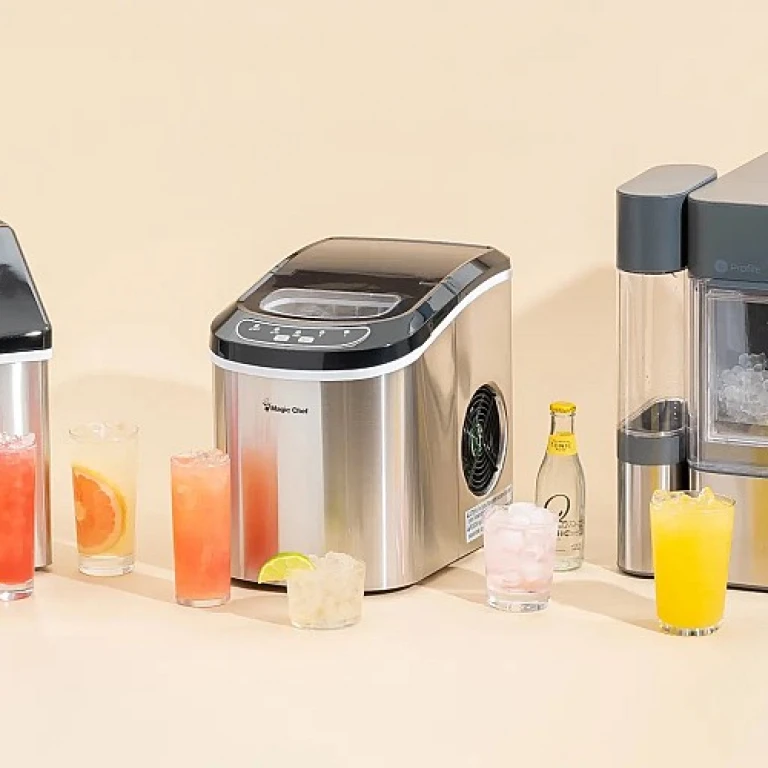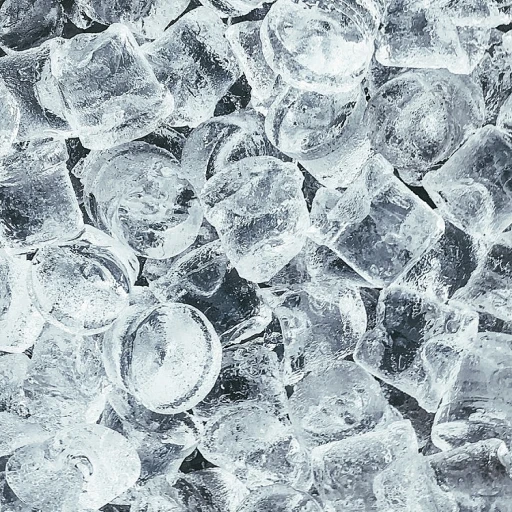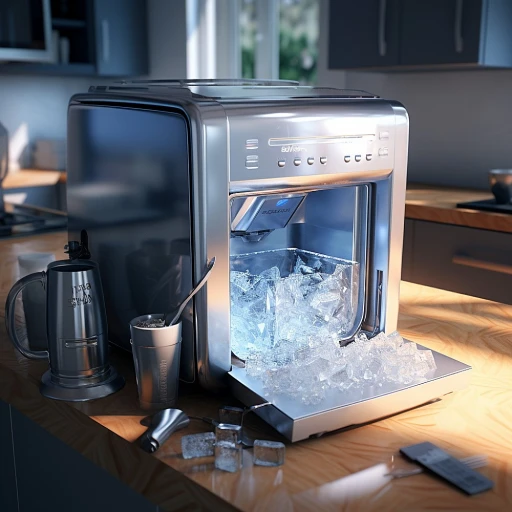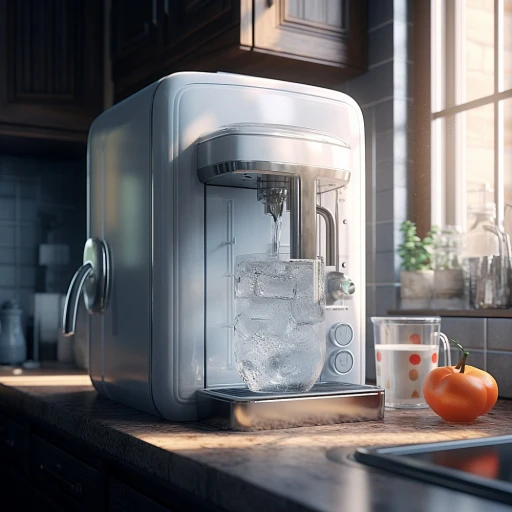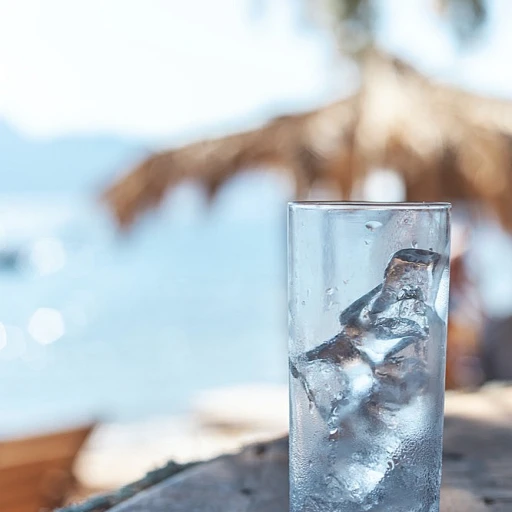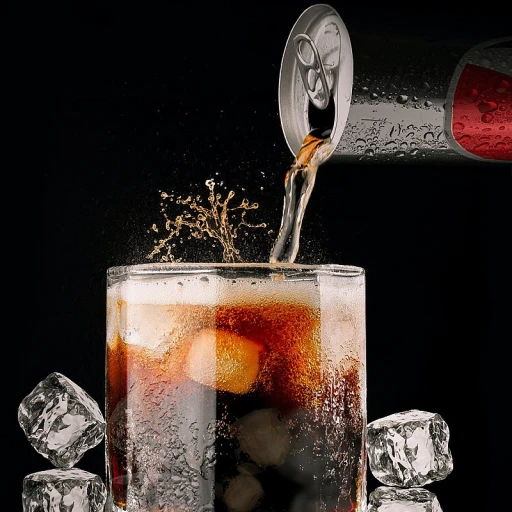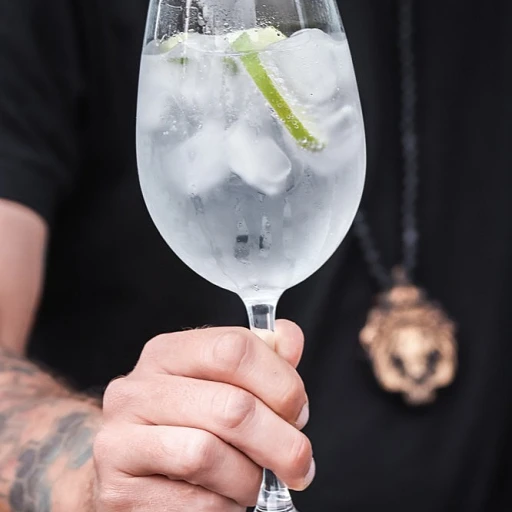
Understanding Outdoor Ice Makers
A Gateway to Choosing the Perfect Ice Companion
An outdoor ice maker isn't just another appliance; it's a delightful addition to your gatherings and events, where ice plays a pivotal role in keeping drinks refreshing. Whether you're entertaining guests or hosting a family BBQ, understanding the nuances of an outdoor ice maker can significantly impact your satisfaction with the purchase.
When assessing the suitability of an outdoor ice maker, several factors come into play:
- Lbs Daily Production: You want an ice machine that can produce an adequate amount of ice, typically measured in lbs per day. Consider your needs—do you have a large gathering often, or are your occasions more intimate?
- Cube Style: The type and style of the ice cubes produced is crucial, especially if you have a specific preference. From gourmet to standard cubes, options abound.
- Installation Type: Decide if a built-in or portable free-standing machine fits your space and usage better.
- Design and Size: Check the nominal width, counter depth, and whether the ice maker can seamlessly integrate with your outdoor decor.
- Daily Use and Maintenance: Understanding maintenance essentials ensures longevity and hassle-free operation of your ice maker.
Choosing the right ice machine involves careful consideration of these elements to ensure that your investment serves its purpose effectively. As you embark on this journey of selection, delve into the ultimate guide to choosing the best crushed ice machine for more insights on finding the ice maker that perfectly matches your outdoor events.
Key Features to Look For
Essential Features for Optimal Ice Maker Performance
When evaluating outdoor ice makers, it's crucial to consider the specific features that will align with your needs. Whether you plan to entertain guests in your backyard, need an ice solution for your pool party, or enhance your outdoor kitchen, selecting the right machine boils down to understanding these key attributes:- Ice Production and Capacity: Assessing the daily ice production is essential. Look for machines that can meet your nominal ice requirements, which typically range from 50 lbs to upwards of 100 lbs daily, depending on your usage. The ice maker's nominal width should fit conveniently within your installation space.
- Cube Style and Type: Not all ice is created equal, and selecting the right cube style—be it gourmet, nugget, or standard cube—can impact your experience. Each type of ice, such as depth cube or counter depth, has a distinct purpose and melting rate, which could leave a significant impression on your guests.
- Design and Installation Type: Consider whether a built-in undercounter style or a free-standing nominal model suits your needs better. Built free installations create a seamless look, while free standing options offer flexibility in placement.
- Durability and Weather Resistance: Given the outdoor environment, ensure the machine is built to withstand elements like rain, sun, and potential warehouse business wear and tear.
- Energy Efficiency: While exploring features, pay attention to energy ratings. Efficient models help reduce long-term costs and environmental impact, conserving energy during those warm, ice-heavy business days.
Installation and Maintenance Tips
Proper Steps for Setup and Upkeep
Whether you’re opting for an undercounter design or a free-standing outdoor ice maker, getting the installation right is crucial for optimal ice production. Here are some tips to ensure your machine is set up and maintained correctly:
- Choosing the Right Spot: Your ice maker should be installed in an area with sufficient ventilation. The nominal width and depth cube of the machine must fit comfortably in the chosen location, leaving enough room around it for the efficient airflow.
- Plumbing Considerations: Ensure that you have easy access to a water supply. Different models may have varying installation types, so consult the manufacturer’s guidelines regarding the necessary connections.
- Electrical Setup: Your outdoor ice maker will require a dedicated outlet that can handle its nominal power requirements.
- Regular Cleaning: Clean your ice machine regularly to keep it free of mold and mineral buildup that can affect the taste and quality of your ice cubes. This is particularly important for high-capacity machines that produce lbs of ice daily.
- Ice Stock Management: Depending on your needs, ensure the ice maker’s bin can handle the daily ice production. Consider how often the ice cube supply needs to be replenished.
- Check the Filter: Many outdoor ice makers use a water filter to ensure the quality of the ice. Regularly replace or clean the filter as needed.
Adhering to these basic guidelines ensures that your ice maker will leave a lasting impression by consistently producing high-quality gourmet cubes. For businesses and warehouses that rely heavily on consistent ice production, these practices ensure uninterrupted operations during busy production installation cycles.
Comparing Different Models
Evaluating Different Models for Ice Production Needs
When choosing an ice maker, various factors come into play that directly affect your decision-making process. The ice maker's production capabilities are one of the primary aspects to consider. Typically, the production is measured in lbs daily, indicating how much ice can be produced by the machine within a 24-hour period. To begin, you should assess the type of ice that suits your needs. From gourmet cubes to standard cube styles, the selection affects both the aesthetic and practical application of the ice. Another critical consideration is whether you need a built free standing or an undercounter style ice machine, as this can significantly impact the nominal width and depth cube requirements for installation. In addition to the style and type, the production installation type must also align with your space constraints and usage intentions. For outdoor settings, it's common to opt for models that thrive in various weather conditions while efficiently producing ice. Ensure the nominal width fits perfectly in the designated area while leaving adequate room for airflow, which often requires anticipating leaves for warehouse business operations. Notably, ice maker models differ in their energy efficiency, which can affect long-term operational costs and environmental impact. To select a model that aligns with your sustainability goals, examine energy ratings and consult resources that furnish detailed machine comparisons. Evaluating energy-efficient ice makers can complement your daily ice production without unnecessary power consumption. When it comes to specialized needs, certain models cater to specific concerns, such as ice counter depth requirements or accommodating gourmet ice production, adding versatility to your outdoor events or warehouse business demands. For instance, some machines can offer a standing nominal performance that can meet high demand without requiring excessive space. Ultimately, comparing the right model involves balancing these considerations with personal preferences and operational needs. By researching thoroughly and weighing all essential criteria, you can confidently choose the perfect ice maker that will cater to every occasion efficiently.Energy Efficiency Considerations
Evaluating Energy Usage for Your Needs
When selecting an outdoor ice maker, it's crucial to consider energy efficiency as it directly affects both the environment and your bills. With so many machines available, understanding their energy consumption can help you make a well-informed decision.- Ice Production Efficiency: Pay attention to the production and installation type of the ice maker. The most energy-efficient models often optimize their ice production capacity while using less power. Look for units with higher daily ice and cube style production in nominal settings.
- Built-in Versus Free-Standing: Both built free and free-standing options are available, each impacting energy efficiency differently. Built-in units often have superior insulation, reducing the energy needed to maintain temperature. Conversely, free-standing models may offer ease of installation at a potentially higher energy cost.
- Machine and Installation Type: Consider whether you're opting for an undercounter or a counter depth cube style ice machine. Environmental conditions, such as installation in a warehouse or outdoor setting, can influence how much energy the machine uses to produce the desired amount of ice (e.g., wide lbs or lbs daily).
Troubleshooting Common Issues
Common Problems and Solutions
Even the best outdoor ice makers can encounter issues from time to time. Understanding how to troubleshoot these problems can save you time and money. Here are some common issues and their solutions:
- Ice Maker Not Producing Ice: Ensure that the water supply is connected and turned on. Check if the water filter is clean and not clogged. If your model uses a gravity drain, make sure it is not blocked.
- Ice is Too Small or Misshaped: This could be due to low water pressure or a malfunctioning water pump. Verify that the water pressure meets the manufacturer's specifications. If your ice maker has a drain pump, ensure it is functioning correctly.
- Ice Maker is Leaking: Inspect the water line connections for any leaks. Tighten any loose connections and replace damaged hoses. If the leak persists, the issue might be with the internal components, which may require professional repair.
- Unusual Noises: Some noise is normal, but if you hear loud or unusual sounds, check for loose parts or debris in the machine. Regular maintenance, as discussed earlier, can prevent these issues.
- Ice is Cloudy: Cloudy ice can result from impurities in the water. Consider using a water filter or switching to a different water source to produce clear ice.
When to Call a Professional
If troubleshooting doesn’t resolve the issue, it might be time to call a professional. Persistent problems, especially those involving electrical components or the stainless steel structure, should be handled by experts to avoid further damage.
Remember, regular maintenance and understanding the key features of your outdoor ice maker, as previously discussed, can help prevent many of these issues. Whether you own a nugget ice machine or a traditional cube ice maker, staying informed will ensure your machine is always ready for any occasion.
-logo-retina.jpg)

